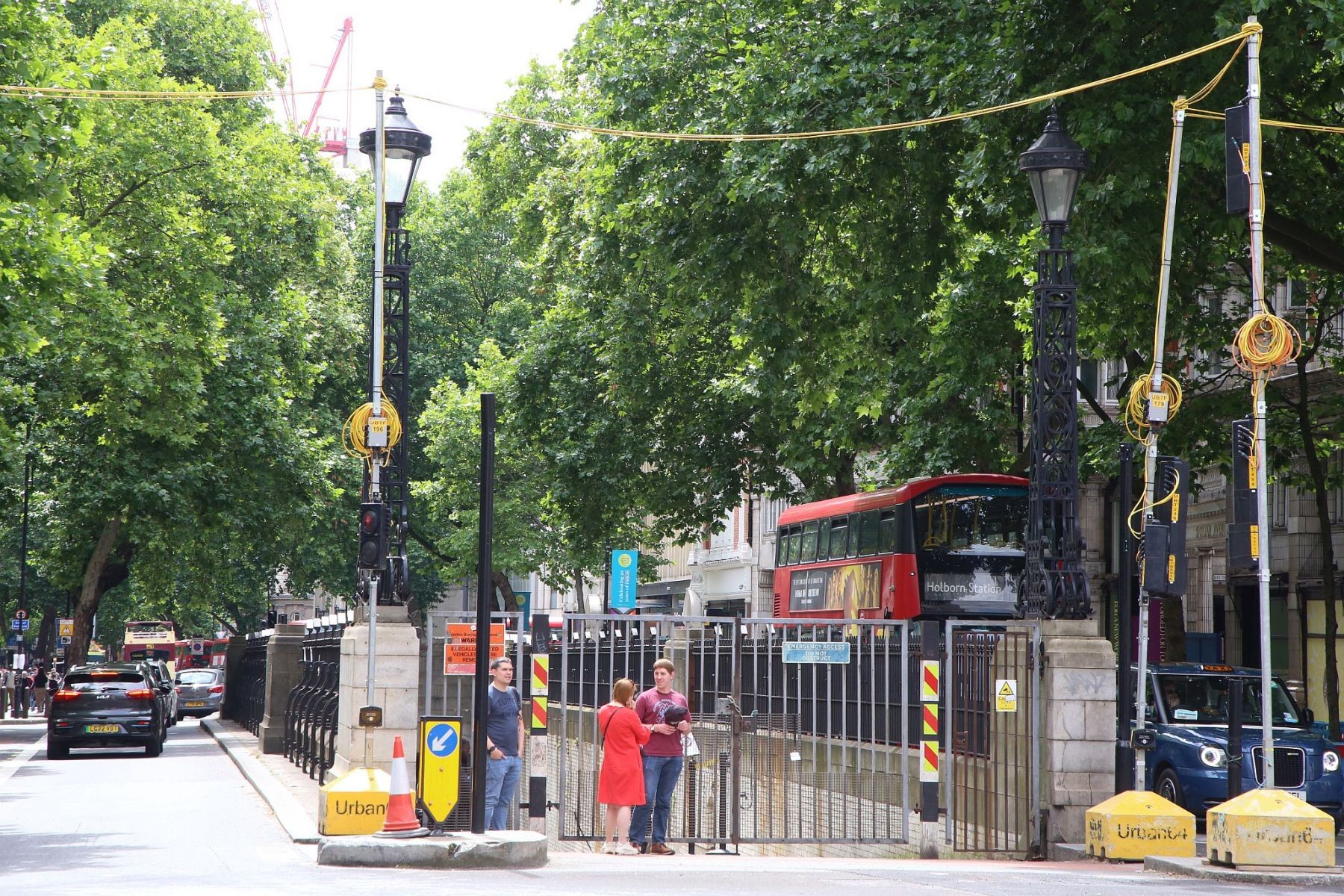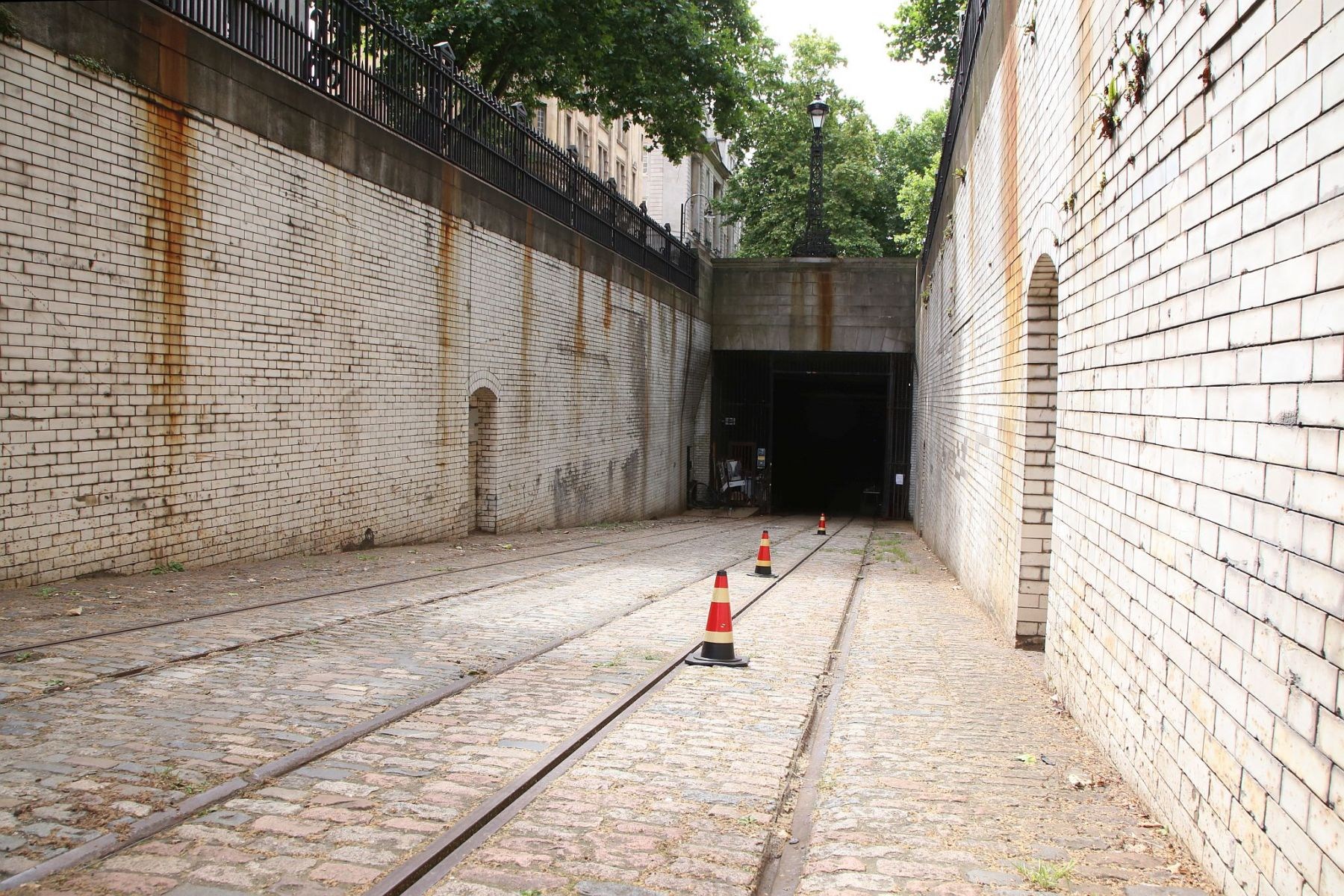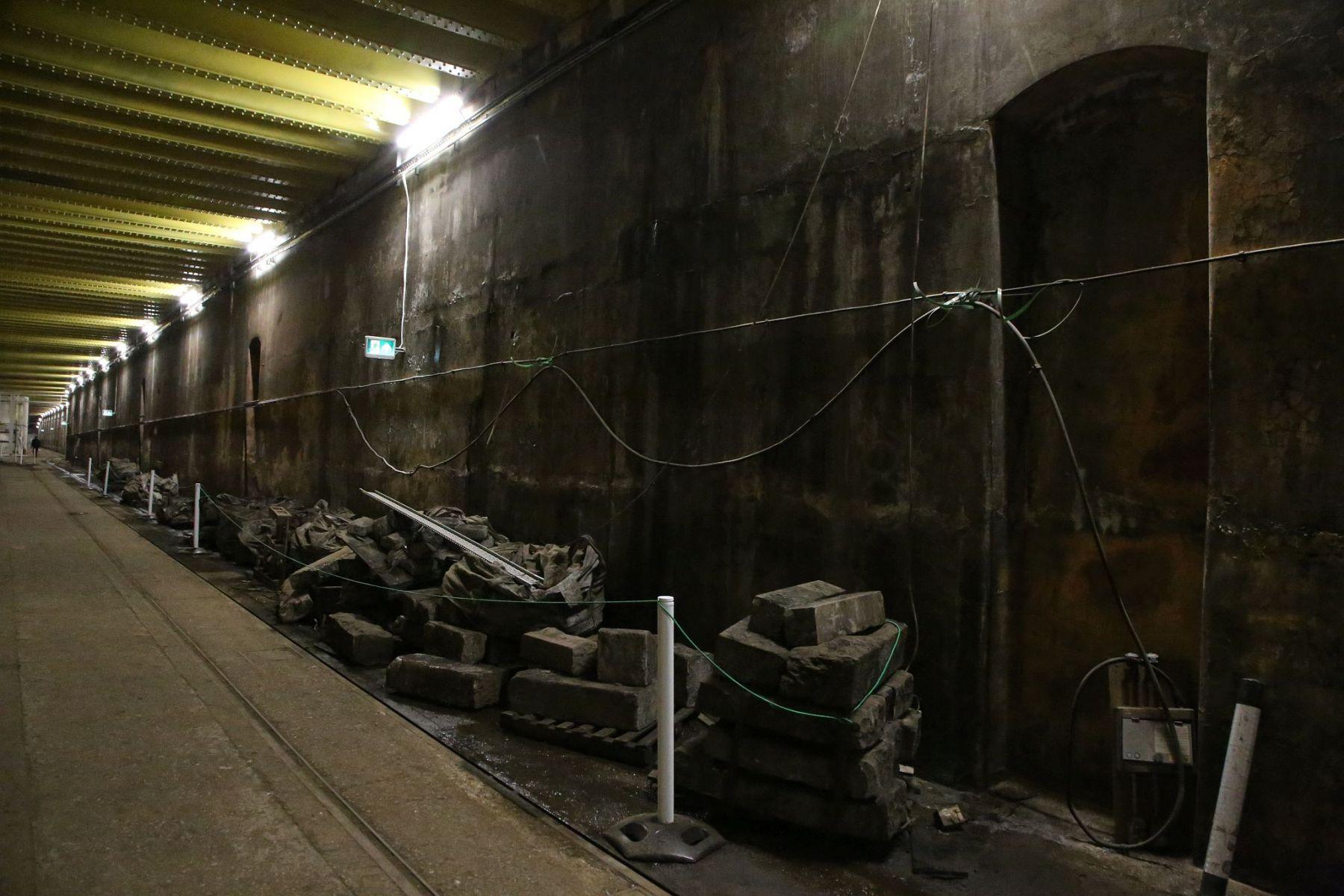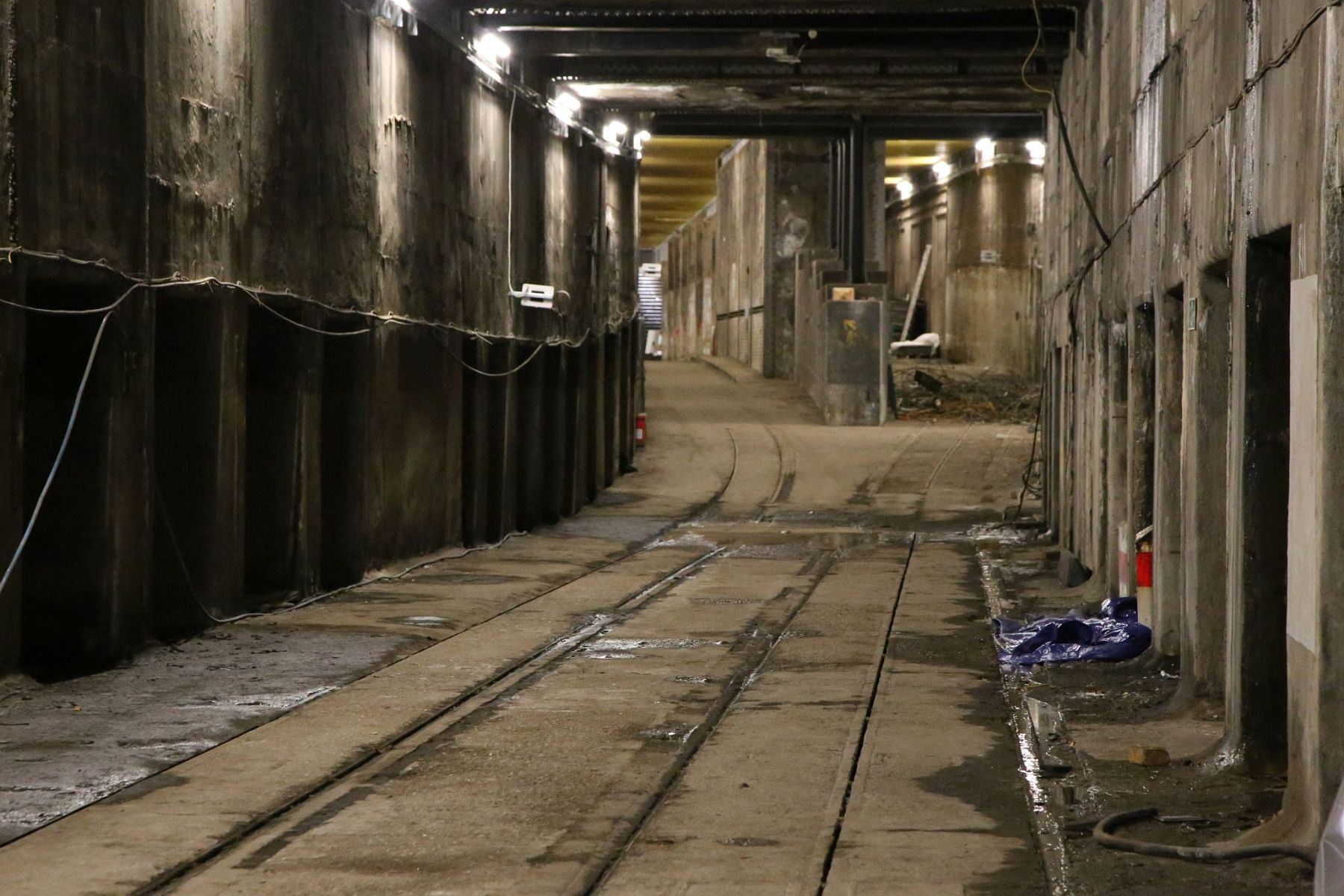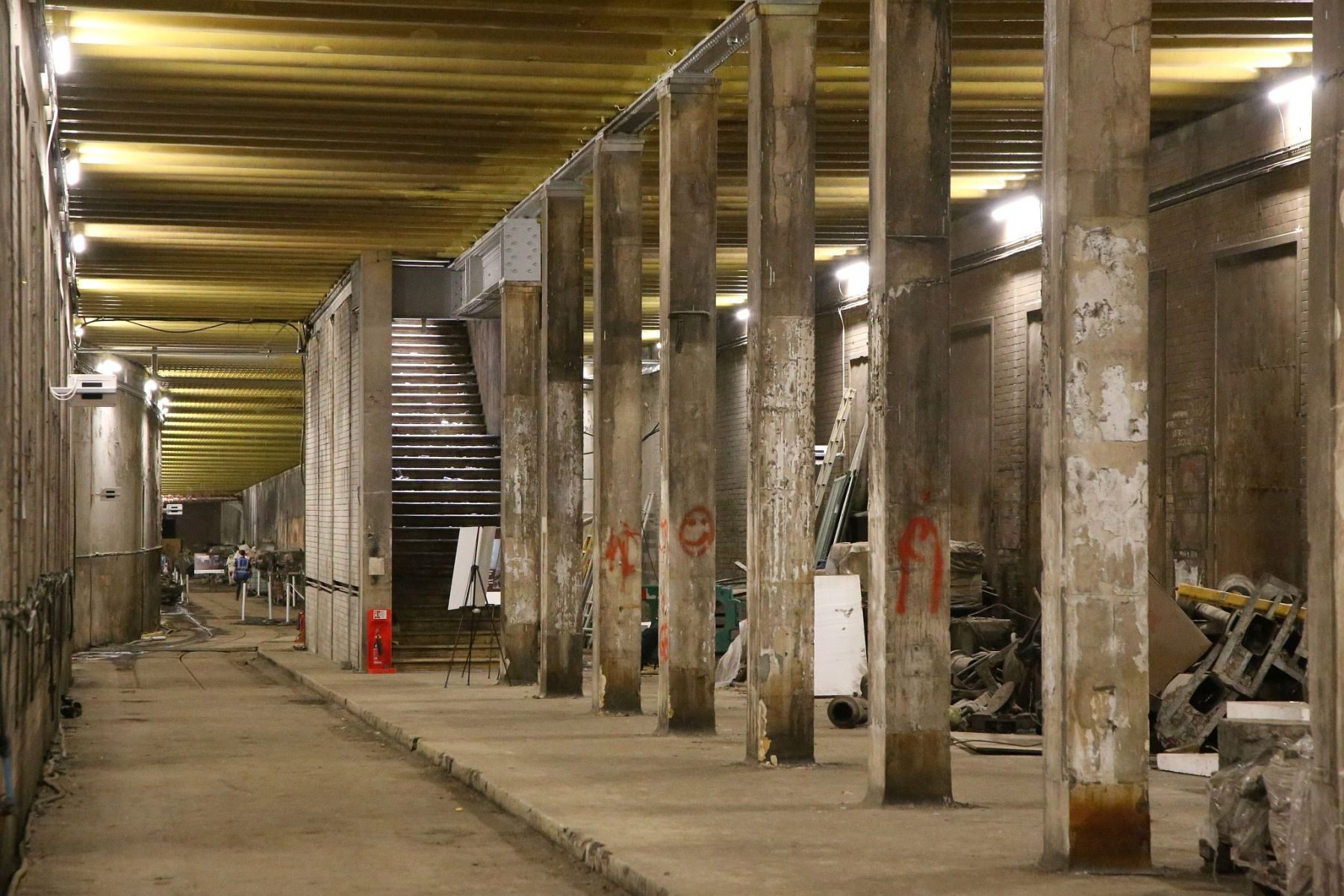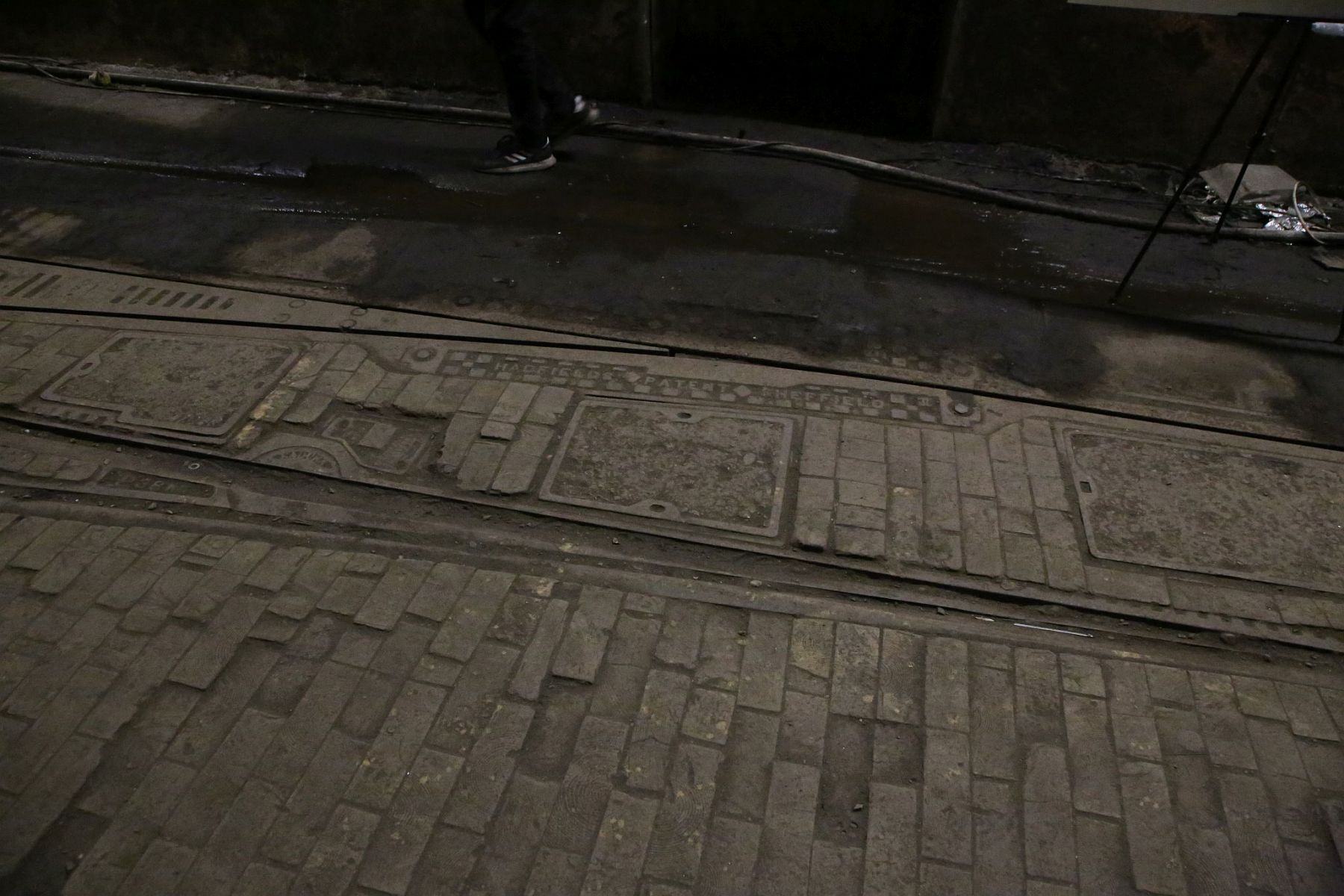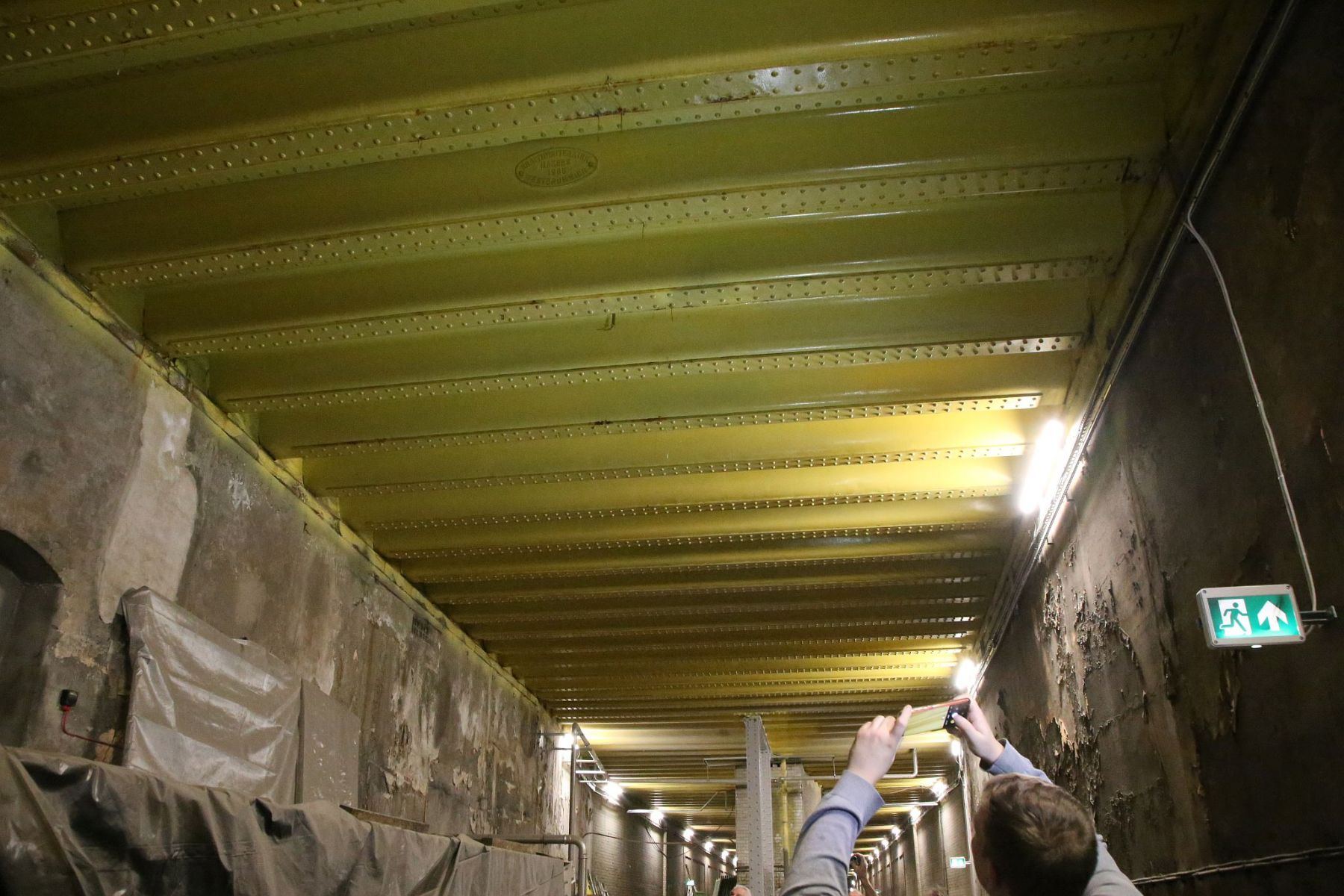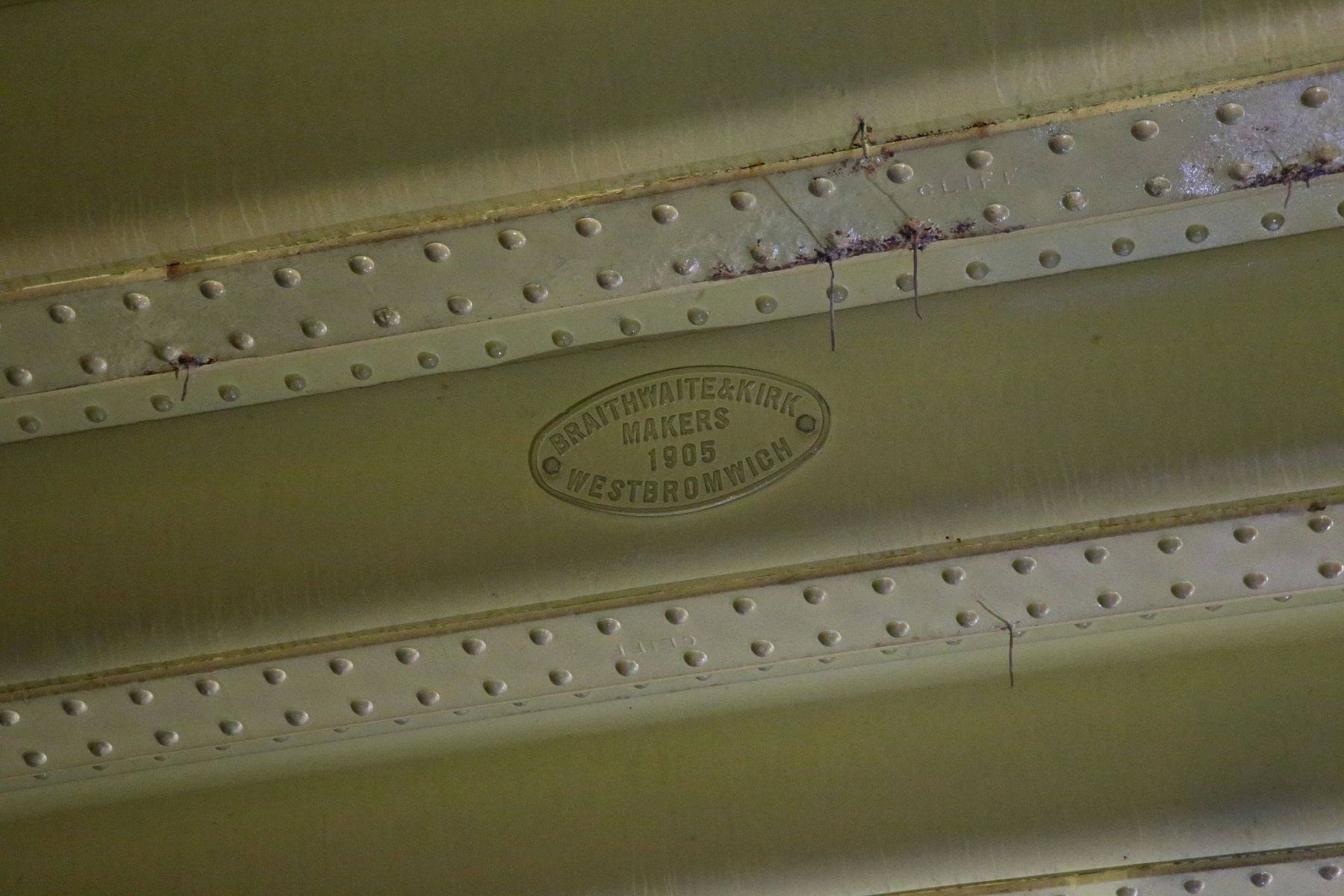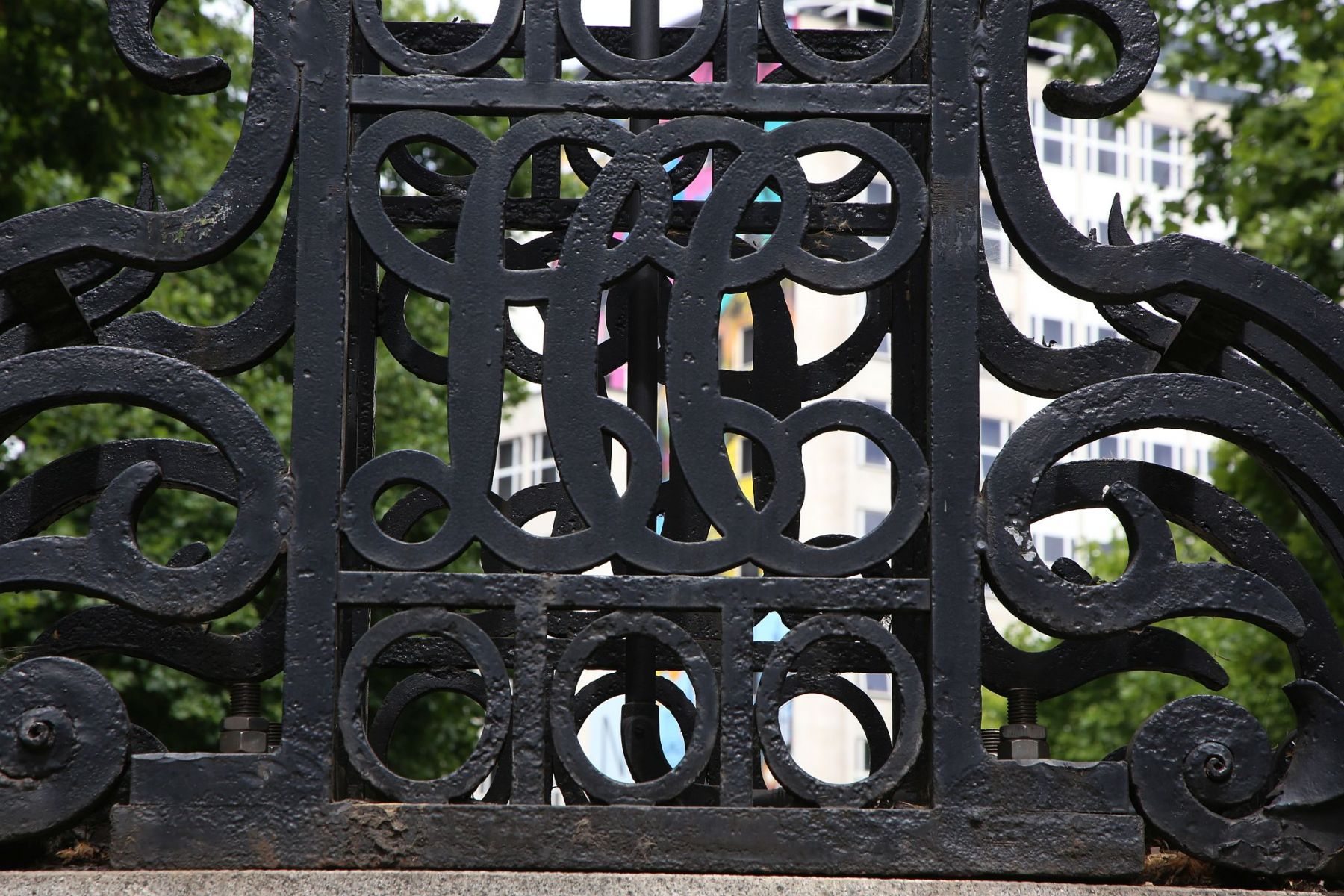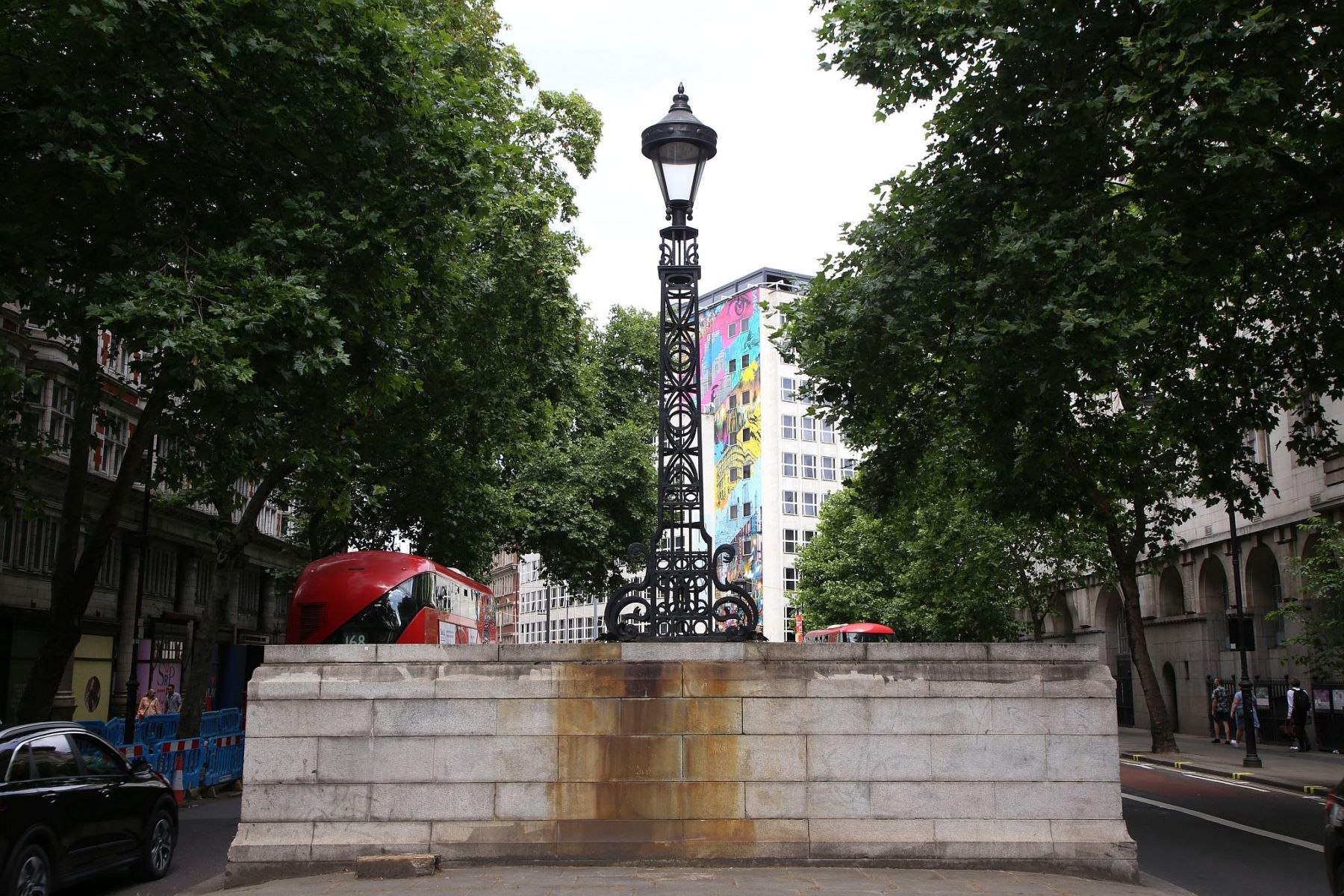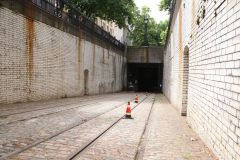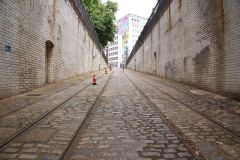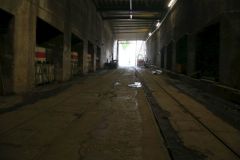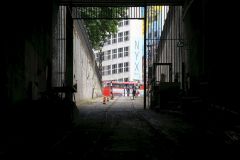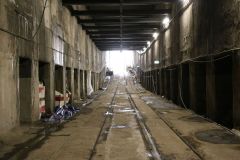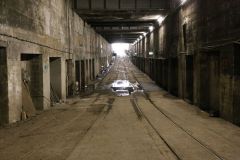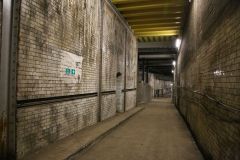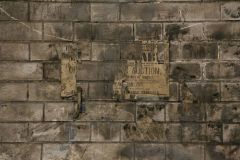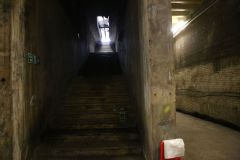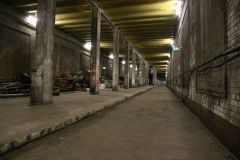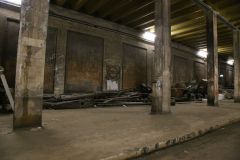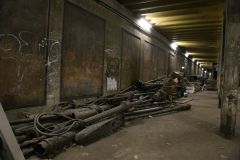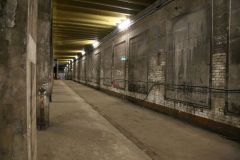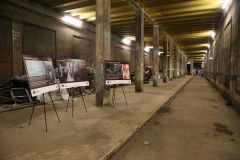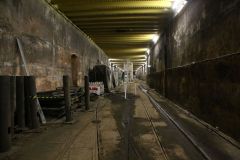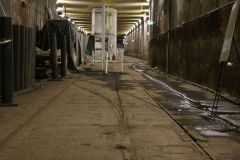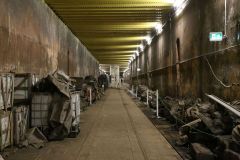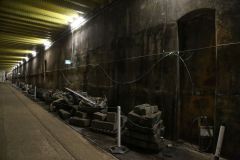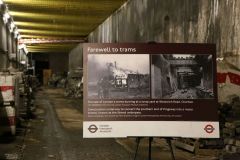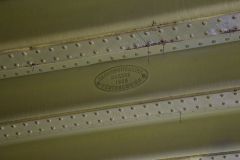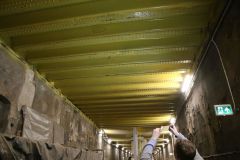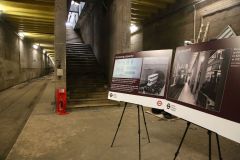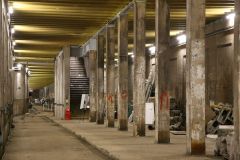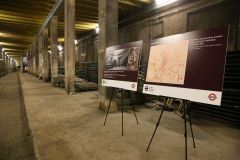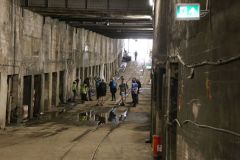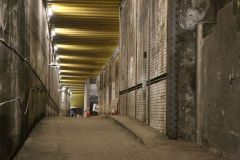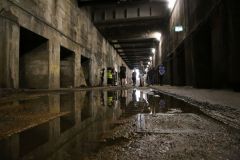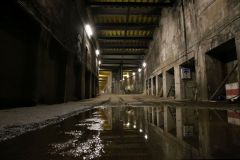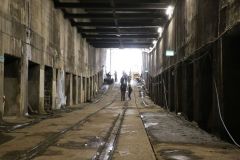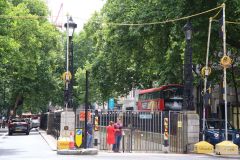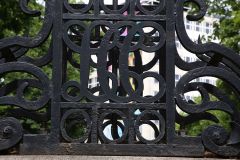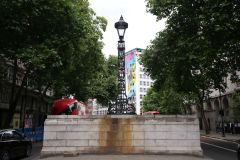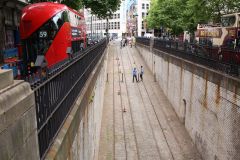Kingsway Tram Tunnel
Heading North over Waterloo Bridge in a car, most take the tunnel that dives under the junction with the Strand and pops up just before Holborn station. The tunnel started life not for cars, but for trams and the original entrance was not on top of Waterloo Bridge, but underneath it where there is now a bar. The current car tunnel only uses part of the tram tunnel’s length.
The Northern Ramp
Traveling on a bus from Euston towards Holborn you see a long disused ramp descending to the darkness under the road with tracks still in place for the trams and a third rail in the middle. This is the Northern entrance to the Kingsway tunnel which took trams from Holborn down to the Embankment under Waterloo Bridge until London’s trams ceased to run in 1952. From the Embankment the trams crossed the River Thames via Blackfriars and Westminster Bridges to serve South London.
Construction of the Tunnel
The tunnel is not really a tunnel, it was built using cut and cover just like most of the Metropolitan and District Line Underground railways. The Kingsway Tunnel was built by digging a tram sized trench in the road and then covering it over with a deck to carry the road.
Originally the tunnel was built for single deck trams only with the trackbed being lowered by a couple of metres years later to accommodate the height of the double decker trams to increase the amount of passengers that could be carried. A mark can clearly be seen in the wall showing the original track level, the whiteish line above the building materials.
As a safety feature the ramp descends deeper than the tram station at Kingsway so that the trams had to climb up a short slope into the station so reducing the strain on the brakes.
Kingsway Station (Holborn)
There were two stations within the tunnels of which only Kingsway survives. The station had a marble floor with the support columns concreted over and then painted to look like classical Greek Doric columns.
Powering the Trams
On the central section through London the trams were powered not by an overhead wire but through a plough which slotted down through the third rail and to the electrical conductors in the conduit. Whilst this meant there was no need for a forest of wires above the streets of London to power the trams, the slot attracted leaves and water as well as adding complexity to the maintenance of junctions. There was also the expense of a team of people whose job was to transfer the trams between overhead and under the road power in the conduits.
Trackwork
South of Kingsway station there are points (also known as switches or turnouts) to enable the trams to switch tracks if they were unable to go any further on their journey.
The Roof
The roof carries the weight of the traffic pounding up and down Kingsway. Makers plates, dated 1905, can be seen every so often.
The London County Council
The Kingsway scheme was implemented by the London County Council whose elegant scripted initials can be seen in some of the lamp stands. As built, double deck trams could not go through the tunnel. Inevitably, this made life difficult when it came to running the service. The floor of the tunnel was eventually dug out to lower it so that double deck trams could use it.
Visiting
London Transport Museum run guided visits to the Kingsway Tram Tunnel and many interesting abandoned stations on the Underground network. https://www.ltmuseum.co.uk/ These pictures were taken in July 2022.
Website Links for Kingsway Tram Tunnels
Gallery
London Transport Museum’s Hidden London tours take people to parts of London Underground normally completely off limits.
I’ve been on most of the tours over the last couple of years. They are all excellent. My favourites have to be Charing Cross and Kingsway Tram Tunnel.
- Aldwych: Used for historic films and Prodigy’s “Firestarter”
- Baker Street: The world’s oldest underground station
- Charing Cross: Very long construction tunnels and see where films are made
- Clapham South: Huge air raid shelter and its influence on Brixton
- Down Street: Used by Winston Churchill to escape air raids
- Euston: Huge numbers of posters from the 1960s
- Holborn: The other end of the Aldwych branch
- Kingsway Tram Tunnel: Huge sub-surface space for tram
- Moorgate: Lots of tunnels to walk through and a huge fan
- Piccadilly Circus: See behind the mysterious platform grills
- Shepherd’s Bush: Ventilation and air raid shelter tunnels

